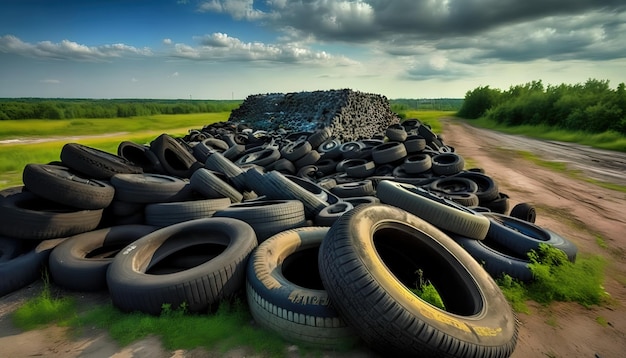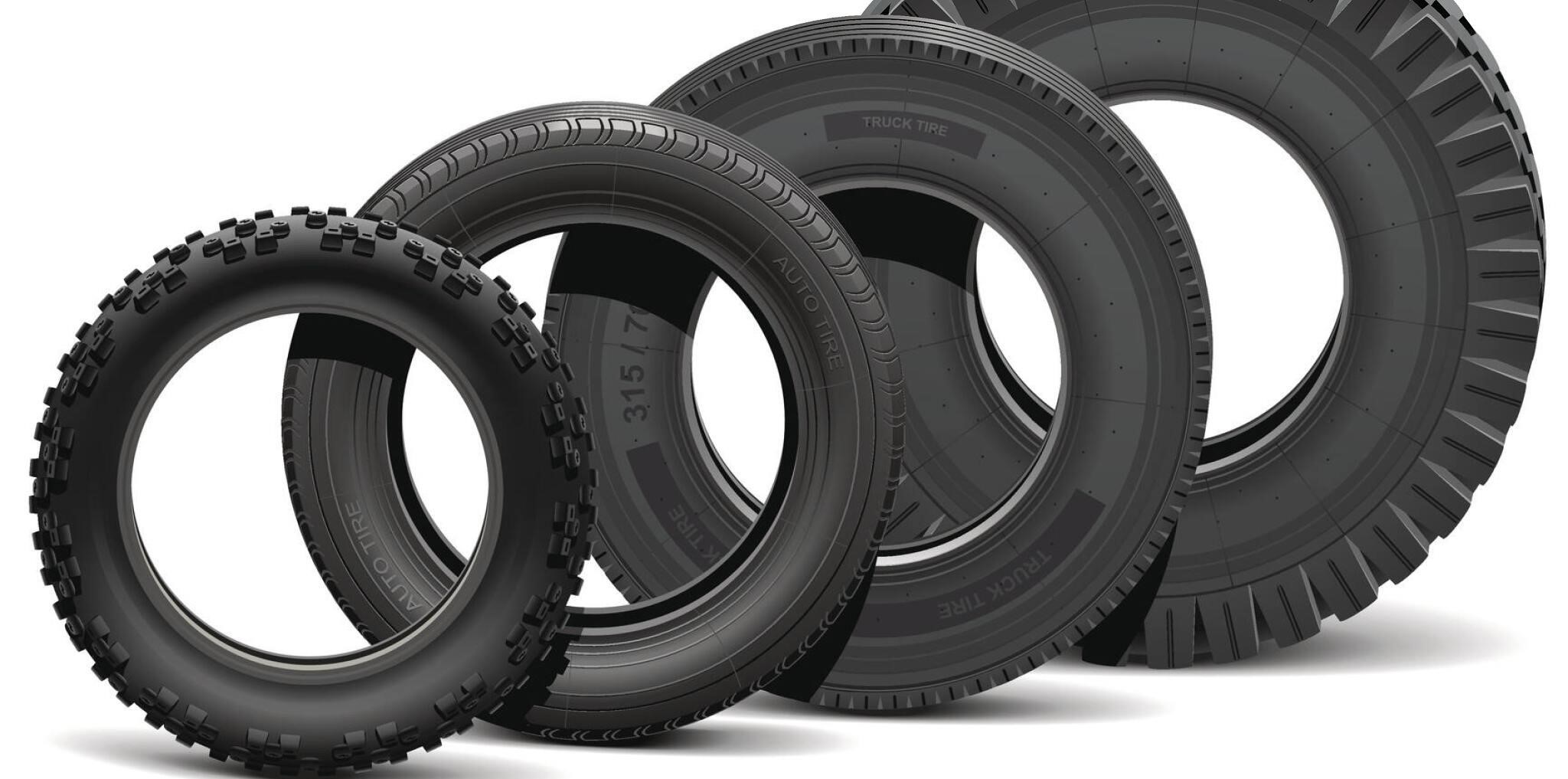Last Updated on July 29, 2025
Discover the Importance, Process, and Benefits of Tire Recycling
Americans will dispose of nearly 300 million worn-out tires this year. That’s a lot of scrap tires, especially if you add this year’s millions to all the discarded millions from last year, and the year before that, and the year before that, and so on. Tires are made to be strong and indestructible. Biodegrading is not one of their strong points.
Concerns About Scrap Tires
Scrap tires collect water and host mosquitoes. They are unwelcome in landfills because they are hollow and take up extra room. Scrap tire fires are difficult to extinguish and can burn for days, weeks, or months, pouring carcinogens and other poisons into the air and water. They pile up, and they do not disappear.
Tire Recycling On The Rise
Most states no longer allow whole tires in landfills, although many accept tires once they have been cut up and shredded. Since it takes money and energy to shred those tires, companies are incentivized to sell that ground rubber to be recycled into something useful instead of paying additional money to dump it into another landfill.
This year, about 84% of those scrapped tires, by weight, will be used instead of landing on a trash heap. More than half, 84%, will become fuel. The rest will be ground up and used in new products or to strengthen construction projects.
The Tire Recycling Landscape in the USA
Introduction: In the United States, the tire recycling journey has come a long way, and it’s a story of progress and promise. Understanding what happens to disposed tire rubber is essential for sustainable practices.
From the creation of Tire Derived Fuel (TDF) to the birth of new products and innovative uses, we’ll explore how discarded tires find new life in various industries. However, it’s crucial to acknowledge that there’s still work to be done, as some tires end up in landfills or illegal dumps.
Let’s delve into the tire recycling landscape in the USA and see how far we’ve come and where we’re headed.
Fuel
(made from approximately 44% of disposed tire rubber in the USA)
Tire Derived Fuel (Known as TDF)
Products From Recycled Tires
(made from about 32% of disposed tire rubber in the USA)
– Sport surfacing
– Asphalt
– Playgrounds
– Other molded products
– Punched and stamped items
– Export for use in other countries
Civil Engineering Projects
(made from approximately 8% of disposed tire rubber in the USA)
– subgrade fill below highways
– backfill for walls and bridge abutments
– drain fields for septic systems
– gas venting systems in landfills
Trashed And Left Behind
(16% still end up in landfills or illegal dumps)
Forty-eight million scrap tires per year are still not recycled, but we have made significant progress over the past two decades. The future of tire recycling looks promising.

Top Tips for Responsible Tire Recycling
Certainly! Here are some valuable tips for tire recycling, emphasizing the focus keyword “tire recycling”:
- Find Local Recycling Centers: Start by locating nearby tire recycling centers or drop-off locations in your area. Many communities have designated places to dispose of your old tires responsibly.
- Check State Regulations: Familiarize yourself with your state’s tire disposal regulations. Different regions may have specific guidelines for tire recycling and disposal.
- Proper Storage: If you’re not immediately taking your old tires to a recycling center, store them in a dry and cool place. Avoid exposing them to direct sunlight, as prolonged sun exposure can degrade the rubber.
- Avoid Illegal Dumping: Never stop illegally dumping tires in forests, water bodies, or vacant lots. Illegal dumping harms the environment and can lead to fines and penalties.
- Donate or Repurpose: Consider donating tires that still have some life left in them to local charities or organizations that can use them for various purposes. Tires can be repurposed for playground equipment, garden planters, or DIY home projects.
- Support Eco-Friendly Initiatives: Look for tire manufacturers or tire shops participating in recycling programs. Many companies collect used tires to ensure they are properly recycled or reused.
- Learn About Recycling Processes: Understand the tire recycling process, which typically involves shredding tires into small pieces. Learning about these processes can help you appreciate the importance of recycling.
- Educate Others: Share your knowledge about tire recycling with friends and family. Please encourage them to recycle their old tires and contribute to a greener environment.
- Explore Creative Uses: Get creative with old tires. Turn them into garden borders, swing sets, or stylish furniture pieces. The possibilities are endless when it comes to upcycling old tires.
- Purchase Recycled Tire Products: Support sustainable practices by purchasing products made from recycled tires. Items like recycled rubber mulch or flooring increase the demand for recycled tire materials.
By following these tips, you can play an essential role in tire recycling efforts, contributing to a cleaner environment and a more sustainable future.
Conclusion
Tire recycling is not just a process; it’s a commitment to a greener, more sustainable future. By understanding the importance, process, and benefits of tire recycling, we can all play a part in preserving the environment. Ready to make a positive impact? Explore eco-friendly tire options at Tires Easy and join us in creating a better tomorrow!
FAQs
How are tires recycled?
Tire recycling involves several steps. First, tires are collected from various sources, including auto shops and recycling centers. They are then processed to remove steel and fiber components, leaving behind the rubber. This rubber is then shredded into small pieces, which can be used for various applications, including creating new tires, playground surfaces, and more.
Can tires be recycled?
Yes, tires can be recycled. Recycling tires is an eco-friendly practice that helps reduce waste and its environmental impact. Many countries and regions have established tire recycling programs to encourage proper disposal and recycling of tires.
Is tire recycling profitable?
Tire recycling can be profitable both economically and environmentally. While recycling companies can generate revenue from selling recycled tire materials, the environmental benefits, such as reducing landfill waste and conserving resources, make tire recycling worthwhile and sustainable.
What are the benefits of recycling tires?
Recycling tires brings several benefits. It helps reduce the burden on landfills, conserves natural resources by reusing rubber, and decreases the energy required to produce new tires. Additionally, it contributes to cleaner air and water by preventing tire fires and reducing the release of harmful chemicals. Tire recycling is a crucial part of sustainability efforts worldwide.
-
Automotive Specialist
-
Proofreader
-
Writer









